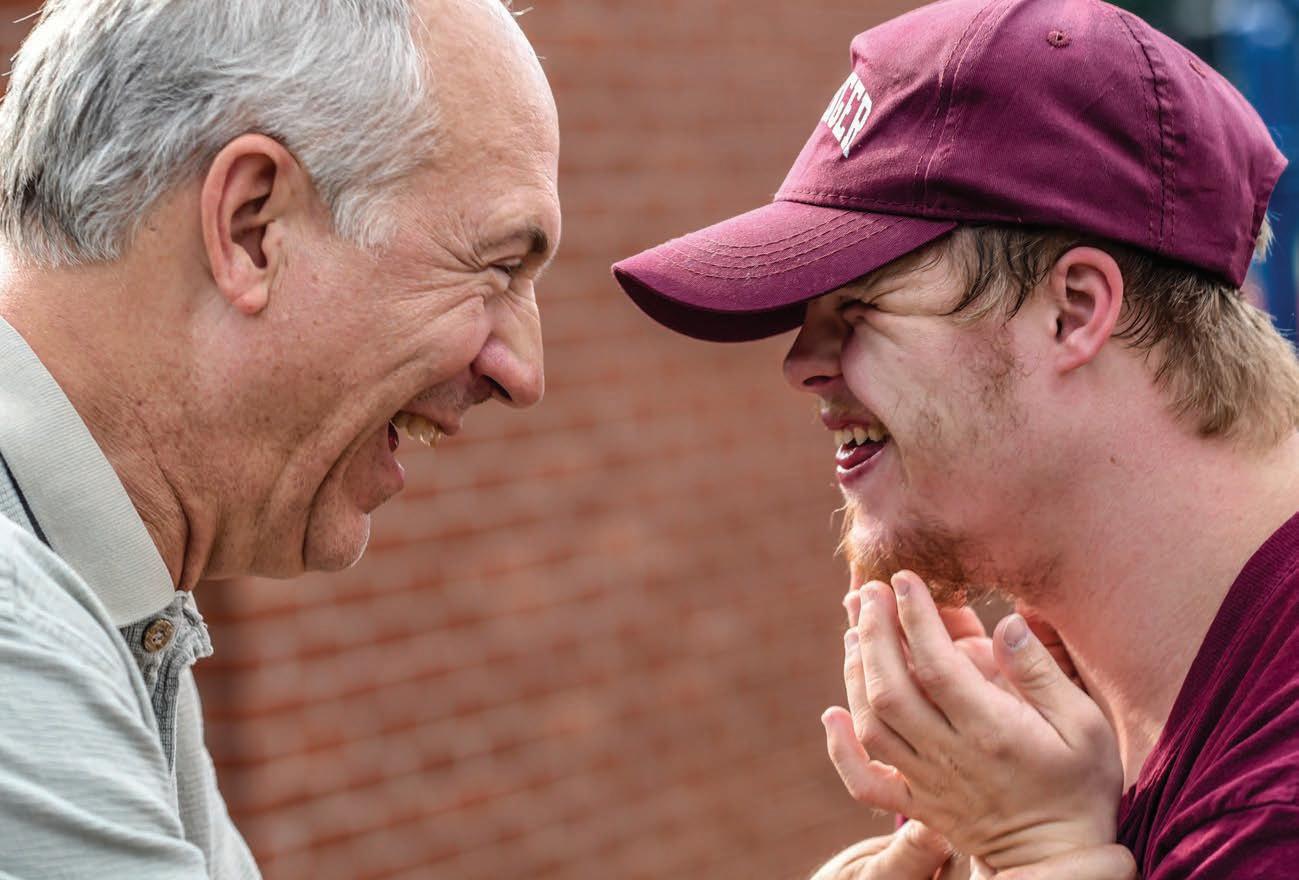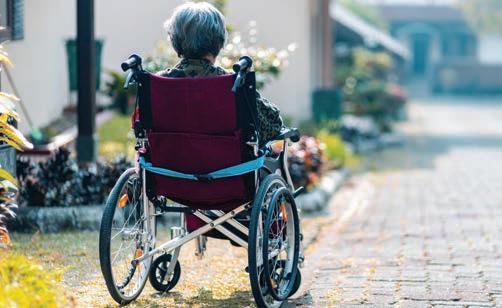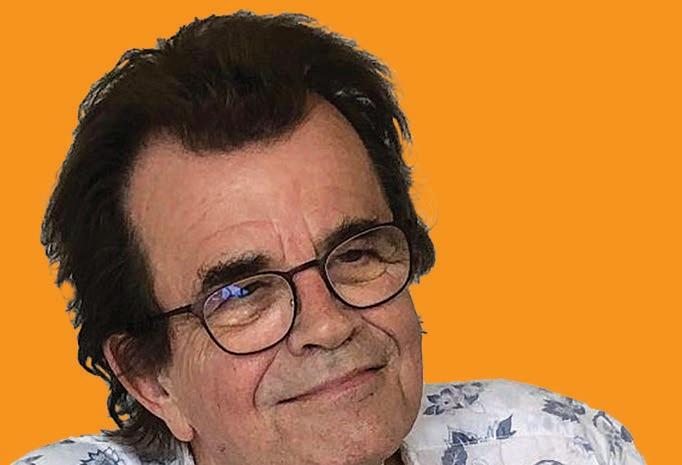
6 minute read
Health & Science
New research shows that a smartphone game that gathers video and audio data could help earlier diagnosis of autism and improve treatment. In the game Guess What? an adult caregiver holds a smartphone to his or her forehead and asks a child to mimic an image displayed on the screen. It might be a monkey, a soccer player, or perhaps a happy or sad face. e adult then guesses what the child is acting out and registers correct answers by tilting the phone forward; incorrect by tilting it back.
For children with autism spectrum disorder (ASD), the game provides a quick dose of therapeutic learning in the home setting — helping them make eye contact with their caregivers as well as helping them associate speci c emotions with various facial expressions.
Advertisement
But the value of Guess What? goes much deeper. Each 90-second game session is video recorded and can be submitted (with appropriate consents and privacy protections) to researchers at the renowned Stanford University in California.
“If we switch the camera on, and we can give useful prompts to the child, we can challenge them, help them, and capture information as we go,” says Dennis Wall, Professor of Pediatrics at Stanford Medicine.
For a few years now, Prof. Wall and his colleagues have been gathering Guess What? home video recordings and using them to develop new ways to diagnose ASD remotely, improve emotionrecognition datasets, track children’s progress recognising emotions, and ultimately improve ASD treatments. e work, which uses computer vision as well as other forms of AI, has potential applications for other types of behavioural analysis as well. “ e methods that the Wall Lab has developed for autism can enable new general purpose models of human behaviour which can be applied to all sorts of conditions, including other developmental delays, mental health conditions, and a ective disorders such as schizophrenia,” says Peter Washington, an assistant

Smartphone game a winner with autism
Professor of Information and Computer Science at the University of Hawaii.
Children with ASD typically struggle with making eye contact and engaging in what’s called social- emotional reciprocity — the back and forth of social interaction that requires an understanding of nonverbal cues including, among other things, the recognition of emotion in others’ faces. Social reciprocity is best learned when children are quite young, and various strategies for teaching it to children with ASD — using, for example, handheld ash cards — have proven e ective, Prof. Wall says.
To address that problem, Prof. Wall and his colleagues developed an autism treatment program that uses augmented reality wearables — speci cally Google Glass —to provide children with cues about the emotions of people with whom they are interacting. Although the Google Glass approach received attention in the media and has proven e ective in a randomisde controlled trial, augmented reality tools have not yet been widely adopted, Prof. Wall says.
To overcome that limitation, he and his team developed Guess What? which relies on a more ubiquitous tool: the smartphone. “Most people across all sectors of socio-economic status, race, and ethnicity have a smartphone,” he says. “ is makes it a potent vehicle for helping to manage health and deliver treatments.” e smartphone is also more natural for families to use because it creates an excuse for social exchange in the home.
But Prof. Wall also had another goal in mind: Collecting home videos of both ASD and neurotypical children. By creating a game that makes it easy for families to safely share videos with researchers, they hoped to gather a large enough data base to move the eld of ASD diagnosis and treatment forward. And those e orts are beginning to bear fruit.
Researchers know that early intervention is bene cial to children with autism, yet in some countries, diagnosis typically takes about two years and the average age of diagnosis is aged four ve, Prof. Wall says. In addition, autism services are not uniformly distributed around such countries, Ireland included.
Going forward, the team hopes their models will gradually become smart enough to diagnose a child with ASD without human assistance. To make that leap, however, the team needs a sizeable stock of home videos to use for model training. at’s where Guess What? comes in.
In a recent paper in JMIR Paediatrics and Parenting, the team tested the idea of using just the audio portion of Guess What? video recordings to directly predict ASD without relying on any humans to label relevant features. Audio is relevant to ASD diagnosis because many children with autism are known to vocalise differently than neurotypical children. n next steps, the team will start combining the audio signal with other types of behavioural information in the videos such as emotion recognition, hand movements, etc. “I’m interested in developing multimodal models that integrate multiple sources of data into one explainable diagnostic system,” Washington says. “It will be useful to know how much of an automated diagnosis was attributed to, for example, emotion recognition or eye contact versus another behaviour such as speech.”
Not only do the scholars hope their game will help diagnose ASD early, they also hope it will assist children in learning and recognising others’ emotions. When children look at another person’s face using the Google Glass autism system developed by Wall and his team, the glass will tell them what emotion the other person is expressing.
For the system to do this accurately and reliably requires a model trained on data base of labeled facial expressions.
Decades-long hunt for Alzheimer’s drug finally shows promise
Leading international pharmaceutical firms have spent decades and billions of euro in pursuit of a breakthrough drug for Alzheimer’s.
None has succeeded in the twin aim of slowing cognitive decline and tackling what is believed to be the underlying cause.
The drug Lecanemab has heralded excitement because it is the first to prove in clinical trials that it can do both, that is slow cognitive decline and tackle the underlying cause.
It works by flushing out harmful amyloid toxins, which form into plaques in the brain where they kill cells and impair an individual’s ability to function.
Results show those given the drug experienced a less rapid decline in memory and problem solving skills and their ability to perform day-to-day tasks than those given a mere placebo.
Trial participants had tested positive for amyloid before enrolment but only had mild cognitive impairment or early stage Alzheimer’s.
They also had a reduced build-up of amyloid in their brain. Experts say lecanemab succeeded because it was designed to target amyloid before it became too clogged up.
The drug has significantly slowed cognitive and functional decline by 27 % in this large patient trial.
The fact the patients only had early-stage disease may also be significant as it may be necessary to clear the amyloid before it has a chance to cause too much damage.
Patients diagnosed with dementia are currently given drugs that help boost the levels of chemical messengers in the brain.
These do not work for everyone and only temporarily mask the effect of the disease.









